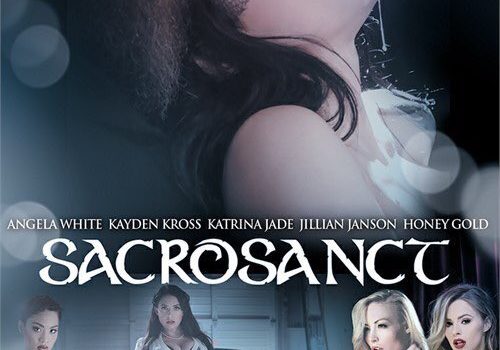What Women Want
This was also published by IBTimes
As far back as the US has called itself the US, we’ve been regarded among the other developed and Westernised nations as the frigid and uptight matron, wagging fingers and buttoning up blouses as one politician after another is embroiled in sex scandals and our adult industry exports a steady stream of pornography from Hollywood to the world’s capitals, suburbs and farms.
But the past few years have appeared – at least insularly – to be something of a turning point in the sexual conversation. One of our biggest reality stars came out – and was received as – a trans woman and appeared on the cover of Vogue.
We applauded and awarded her. Congress opened up the discussion of public bathrooms as a place that becomes necessarily discriminatory once they are labeled for one of only two (genetic) gender options when our country’s population contains people who identify outside of that.
Slut shaming became a politically wrong move and then, lo and behold, the ‘work’ in ‘sex work’ was finally upheld as such among a growing, if still divided, liberal voice – though I maintain that the scale tipped on the day that Charlize Theron held up a pin that read “sex work is work.”
The case is far from closed, but it’s leaning in a favourable direction. Around here the sex advice columns have shifted from advice on when it’s acceptable to ‘give it up’ to safe and practical tips for the modern woman who is always prepared for the unplanned one-night stand.
“Friends with Benefits” is a clearly defined relationship status. Porn consumption is at an all-time high and climbing. Even porn performers are more sexed up: these days women come into my industry readily equipped with more rambunctious first scenes than the most seasoned pros used to deliver at the turn of the century.
These converging trends towards freedom of sexual expression would appear to lead to the assumption that we are in turn reporting experiencing an increase in sexual satisfaction at rates never before seen.
We aren’t, though. At least women aren’t. In a recent study, it was shown that women are self-reporting decreased rates of sexual satisfaction compared to the same surveys taken in the nineties. I submit that the problem is porn, or more generally porn as a mindless reflection of shifting cultural assumptions.
As a growing number of people are watching porn, other self reports are showing that a growing number of people are taking cues from porn – especially that part of the population that is coming of age at a time when porn is available to anyone with a mobile device – and the movement in favour of the freedom of female sexuality at some point got confused about what female sexuality actually was. Somewhere along the way the message became that a sexually liberated woman is just one who unapologetically behaves like a man.
The sexuality of the hetero man is not and should not be the standard against which all else falls short, though porn was likely the first to portray it that way. When it comes to technology, sexual dynamics, and bodily trends, porn is very often leading the charge.
It’s a sort of blind machine in that way. People forget that porn is blind in most ways. In taking cues from it, women forget that porn is skewed towards the perceived fantasy of the male viewer. Through that lens, it is easy to see why we’d make a dream girl of a woman who wants what the man watching also wants. Porn makes no moral claims and takes no responsibilities, and in the course of production its credos are isolated only to the mind of individual creators whose metrics are limited to matters of web traffic and personal satisfaction, in no particular order.
The porn we most readily know as “porn” is not made for women, and that porn that is made for women is distinct in a particular way that you don’t run into nearly as much on the free and highly trafficked sites: dialogue. Porn made for women depicts women communicating a great deal more with their partners before the sex scene, and also feeling a great deal more in terms of conflict, jealousy, love, betrayal, and excitement before any clothes are stripped off or skin-to-skin contact comes into play.
That’s not surprising, though, when you look at the role language has played in sexual selection within our species. In Sex, Time, and Power, Leonard Schlain makes the argument that across the species women always had a better grasp of language and consistently chose as sexual partners the men who were most proficient with language as well. It is why women say they want a man who can make them laugh. Sure, laughing is nice—but the ability to make someone laugh is also evidence of a firm grip on the art of verbal communication.
Yet the more mainstream porn plots (or lack thereof) depict the most sexually satisfied women as those who can shove things furthest down their throats, who can get their partners into bed with the most speed, and who can withstand the most extreme physical sensations in terms of size, force, and duration.
Porn sells the idea of the insatiable woman: no man can give her enough. She does not have the time for conversation and he does not have the parts, the strength, or the body count to individually satisfy her. She must have more. She is his mind, housed inside of a woman’s body.
So perhaps the failure to find growing satisfaction in an age of open sexuality lies not in the low-budget film on the flickering mobile screen, but instead in the deeper and more insidious way our culture has embraced the movement of women standing up to behave sexually in the way that is most true to themselves, only to slyly subvert it into the belief that what female sexual empowerment looks like is the same male fantasy that had existed all along.
As a woman in this age of sexual empowerment, there should of course be nothing wrong with finding that what you are is insatiable — and pursuing that — just as as a man there should be nothing wrong with finding that you are more stimulated by connection or something other than the pornographic norm.
The same holds true for anyone identifying as someone other than a hetero cisgender man or woman. The conversation is about a right to be open and true to oneself in both our identities and our sexualities. But if we’ve come this far only to be spoon-fed another false story about who we are now, what ever was the point?




